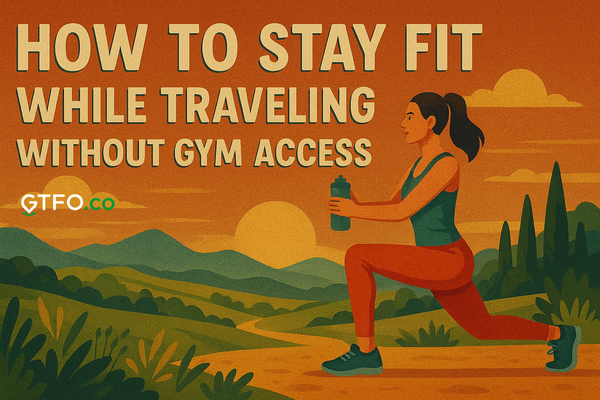What Is a Red-Eye Flight? Everything You Need to Know Before You Book One
A red-eye flight is an overnight flight that typically departs late at night and arrives early in the morning, named after the bloodshot eyes travelers often have the next day. You can love them or hate them, but red-eyes can be a smart move for certain trips. Here's how to make them work for you.

What Is a Red-Eye Flight?
A red-eye flight is a flight that departs late at night, usually between 9 PM and 1 AM, and lands the next morning, often between 5 AM and 7 AM. These flights are most common on coast-to-coast U.S. routes or long domestic hauls where time zones or travel time make daytime flying inconvenient.
They’re called red-eyes because passengers often arrive tired, bleary-eyed, and sleep-deprived which kinds of makes it look like an horror movie. But if used right, a red-eye can save time, money, and even a hotel night.
Key Takeaways
- Red-eye flights fly overnight, departing late and arriving early.
- They're popular for saving daytime hours, avoiding crowds, or maximizing limited vacation time.
- Downsides include potential exhaustion, poor sleep quality, and awkward arrival hours.
- Choosing the right seat, packing smart, and adjusting your sleep schedule can improve the experience.
- Ideal for business travelers, budget-conscious flyers, or people with tight itineraries.

Why People Take Red-Eye Flights
Red-eyes aren’t just for the budget-conscious or hardcore travelers. Travelers book them for a variety of reasons:
1. Save Time
Flying while you sleep means you don’t waste a full day getting from A to B, which is huge for short trips or business travel. Fly out after work, land early, and be ready for meetings or any other planned activity the next day.
2. Save Money
Red-eyes are often cheaper than daytime flights. That’s because fewer people want them. Airlines lower the price to fill those seats. You might also save money by skipping a night in a hotel if you’re sleeping (emphasis on the if) on the plane.
3. Avoid Crowds
Late-night airports are quieter. Security lines are shorter. Boarding feels less like a stampede. You’re less likely to deal with delayed flights, too, since there’s usually less traffic at night.
4. Match Time Zones
If you’re flying from the West Coast to the East Coast (say, LA to NYC), a red-eye helps you sync up with the time zone shift. You land early in the morning and start your day on Eastern Time.

Downsides of Red-Eye Flights
You knew these were coming. Not everyone can function on four hours of airplane sleep. And some red-eye flights are brutal depending on the plane, route, or your personal sleep style.
1. Sleep Is Not Guaranteed
Even if you’re exhausted, airplane sleep is a gamble. Cramped seats, engine noise, turbulence, and that one guy watching a movie with the brightness at 100%. All of it can kill your chances of decent rest.
2. You Might Arrive a Zombie
Landing at 5:30 AM after a rough night of "sleep" can be disorienting. And if you can’t check in to your hotel until 3 PM? That’s a long day to push through on fumes. Trust me, I've experienced exactly this in the beautiful 90% Singaporean humidity.
3. Not Ideal for Kids or Light Sleepers
If you’re traveling with young children or are easily disturbed, a red-eye might be more stress than it's worth. It can throw off everyone's internal clocks for days.
4. Limited Services at Airports
You might land early, but that doesn’t mean everything’s open. Restaurants, rental car counters, or even ride shares may be limited at 5 AM.

How to Survive (and Maybe Even Enjoy) a Red-Eye Flight
If you’re going to do a red-eye, do it right. A few adjustments can mean the difference between landing ready for the day and wanting to crawl into a dark room and cry (Please don't. Be strong).
1. Choose the Right Seat
- Window seat = sleep potential. You’ll have something to lean on and won’t get bumped by your rowmates needing the bathroom.
- Avoid sitting near bathrooms or galley areas (too much noise and foot traffic).
- If you can swing it, consider extra legroom or upgrading to a premium seat. Just a few extra inches of recline can go a long way.
2. Dress for Comfort
This isn’t the time for tight jeans or heavy layers. Go full comfort mode: soft layers, breathable fabrics, and slip-on shoes. Bring socks if your feet get cold. I'd argue you know at least one person whose go-to outfit is like this regardless if they're taking a flight or not.

3. Sleep Kit = Essential
Bring:
- A neck pillow that actually supports your head. (We love this one by Ostrichpillow)
- A sleep mask to block light.
- Noise-canceling headphones or earplugs.
- A blanket or large scarf—planes are freezing.
4. Time Your Sleep Ahead of the Flight
If possible, shift your sleep schedule a bit the day before. Even just going to bed an hour later and sleeping in can help.
5. Avoid Heavy Meals Before Boarding
Big meals mess with sleep. Aim for something light and balanced a couple hours before takeoff. I can't stress this enough, but skip the sugary airport snacks, they’ll make it harder to rest.
6. Stay Hydrated
Cabin air is dry. Bring a refillable water bottle and sip throughout the flight. Dehydration makes jet lag and fatigue worse.
7. Have a Post-Landing Plan
If you can’t check in early, have a strategy. Find a local café with Wi-Fi, plan a light morning activity, or pack clean clothes and toiletries to freshen up at the airport.

Who Should Book a Red-Eye (And Who Shouldn't)
Great for:
- Business travelers who need to be in another city by morning.
- Couples or solo travelers who can roll with a little discomfort.
- Budget travelers looking to save cash on both flights and hotel.
- People flying coast-to-coast who want to maximize their trip.
Probably skip it if:
- You're traveling with toddlers or small children.
- You absolutely need to be alert upon landing.
- You’re a light sleeper or prone to travel-related anxiety.
- You have a medical condition that’s impacted by sleep disruption.

Common Red-Eye Routes
Red-eyes are most common where the time zones help the schedule make sense. Some of the most frequent red-eye routes include:
- Los Angeles (LAX) → New York (JFK or LGA)
- San Francisco (SFO) → Boston (BOS)
- Seattle (SEA) → Miami (MIA)
- Las Vegas (LAS) → Chicago (ORD)
- Denver (DEN) → Atlanta (ATL)
Internationally, red-eyes are often unavoidable due to time zone differences and long distances. Many flights to Europe from the U.S. are overnight.
Is Jet Lag Worse on a Red-Eye?
It depends more on the time zone change than the overnight flight. But yes, the combination of poor sleep and shifting clocks can intensify the fog. Combat it by:
- Getting sunlight as soon as you land.
- Staying awake until local bedtime.
- Eating meals on the destination's schedule.
- Avoiding naps longer than 30 minutes.
- Try an app like Timeshifter
Bottom Line
A red-eye flight is a smart move if you plan it right and know what you’re getting into. It’s not luxurious, but it’s efficient. You trade a night of sleep for extra time on your trip or extra money in your wallet.
If you're prepared, rested, and flexible, a red-eye can be a good choice. If you're cranky without eight hours and a memory foam pillow, maybe look for daytime flights instead.
Common Questions About Red-Eye Flights
Q: Why are red-eye flights cheaper?
Because fewer people want them. Airlines price them lower to fill seats.
Q: Can you sleep on a red-eye flight?
Yes, but it depends on the seat, your sleep style, and how prepared you are. Bring a sleep mask, pillow, and earplugs to increase your chances.
Q: Are red-eyes bad for your health?
Occasional red-eyes are fine for most people. But frequent overnight flights with poor rest can mess with your sleep patterns and increase fatigue.
Q: What should I pack in my carry-on for a red-eye?
Neck pillow, sleep mask, earplugs or noise-canceling headphones, water bottle, snacks, toothbrush/toothpaste, charger, and a change of clothes.
Q: Can I check into my hotel early after a red-eye?
Sometimes, but it depends on the hotel. Call ahead. If not, ask if they’ll hold your bags and let you use the lounge or fitness center.





